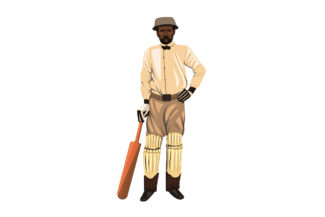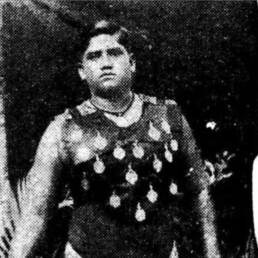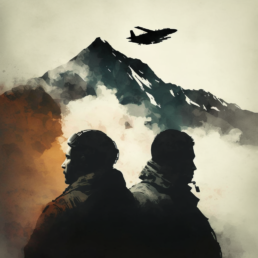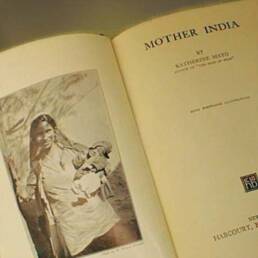Cricket’s Avant Garde whom the game chose to forget
The tale of the first ever tour of the British Isles by an overseas cricket team, nearly a decade before the first official England / Australia test match was played. The team, chaperoned by an Englishman, consisted of 13 Australian Aboriginals who for a period of more than six months, captured the imagination of the British public and earned their respect.
By Trinanjan Chakraborty
8th February, 1868. Sydney harbor, Australia. The sailing ship, the Parramata, loaded with its traditional cargo of wool, was about to embark on a three-month journey to the British Isles. But apart from the wool, the fully rigged sailing ship carried a far more interesting cargo, in the form of 13 men who would soon become the topic of conversation in every club and public house in England. They were pioneers, but their story has somehow been lost in obscurity. For these 13 formed the first ever Australian side to visit a foreign country to play cricket matches. And this is their incredible tale.
Mid-nineteenth century Australia. The discovery of gold in Bathurst, New South Wales in 1851 dramatically altered the landscape of the colony. It is estimated that the lure of gold motivated around two percent of the population of Great Britain and Ireland to immigrate to Australia in the years following Bathurst. However, the frenetic hunt for gold brought the western colonialists in contact with the original inhabitants of the island continent – the aboriginal tribes, dubbed “Blacks” by the white man. These were sometimes curious outreaches or even friendly overtures. But occasionally, it took an ominous form. In 1861, a group of aborigines stormed a pastoral camp^ in central Queensland and brutally killed 19 of the 25 camp members.
Three years after this tragedy, cricket matches between colonial settlers and aborigines had become quite popular in Victoria. In 1866, Tom Wills, the captain of Victoria, accepted an offer to become captain/coach of an aboriginal side. Having grown up in the “bush”,1 travelling with his pastoral father’s stations , Tom Wills was well versed with the language and customs of the aboriginal Australian tribes. As such, there were few better suited than him to mentor an Aboriginal side. Yet, Tom Wills was one of the six survivors of the horrible massacre of 1861, the worst ever in Australian history perpetrated by aborigines. In fact, the camp was owned by his father Horatio Wills, and his entire family perished in it.
It is not known how Tom Wills’ personal feelings towards the aborigines changed after the massacre. But he certainly put his heart and mind into training them and on Boxing Day, 1866, led the Aboriginal side to take on Melbourne Cricket Club at the Melbourne Cricket Ground. Although Wills’ side lost, the performance of the aboriginal players was roundly praised and soon the team was touring and playing matches all over Victoria. It was during this time that an offer to tour England was made by a certain Captain Gurnett. But Wills had a fallout with Gurnett, and left the tour. In February of 1867, the aboriginal side landed in Sydney hoping to travel to England but came to know that Gurnett had embezzled funds raised for the tour which was now in jeopardy. Separated from their captain and mentor, the Aboriginal players were now stranded in Sydney. That’s when Charles Lawrence came to the rescue.
An Englishman who had played the game for English, Irish and Scottish sides, Lawrence put up the side in his own hotel and went about trying to arrange matches in New South Wales in order to raise funds for the team to return to their native places in Victoria. As he travelled and trained with the team, the idea of the tour to England revived. Lawrence found backers in the form of Sydney lawyer George Graham and the latter’s cousin George Smith as well as a third gentleman named William Hayman. After a two-month training camp, Charles Lawrence selected 13 Aboriginal players for the English tour.

However, when all seemed set, the Central Board for Protection of Aborigines in Victoria intervened. During the tour of New South Wales with Lawrence, four members of the original squad had died from diseases. The Board was worried that the cold and damp English weather would not suit the aborigines and refused to allow them to travel. A desperate Lawrence kept his players hidden and finally managed to smuggle them aboard the Parramatta which was carrying wool to England.
After more than three months, on 13th May, 1868, the ship docked at Gravesend. The arrival of Charles Lawrence’s side created much buzz and excitement in the Isles. However, little of it was centered on their cricketing abilities. In fact, the Englishmen (and women) were most keen to see these near savages and some of the more learned ones were happy to conclude that here was a living and walking proof of the validity of Darwin’s theories of evolution.
For most matches, usually of two- or three-days duration, another day was added where the Aboriginal players showed off other skills like boomerang throwing, spear throwing, cricket ball throwing among others. . In fact, in a cricket ball throwing contest, the aborigines were beaten by a 20-year-old Englishman who was touted as the “next big thing” of the game; his name: William Gilbert Grace. One of the most fascinating sights was the game of dodging. The aborigines challenged the locals to throw cricket balls at them which they dodged with their traditional shields and clubs.
Although they were written off as serious cricketers (The Times called the tour “a travesty upon cricketing at Lord’s”), the team soon started making an impact. After losing their first six games, they started turning things around. Over their 126 days of stay, the side played 47 games, winning 14, losing 14 and drawing the other 19. Their cricketing skills and general behaviour were widely praised. Their native names being too difficult for the English tongue, the players became better known by their sobriquets. Unarrimin, the side’s best player became famous as Johnny Mullagh, Jungunjinanuke, the master at the art of dodging, came to be known as Dick-a-Dick and Grougarrong, who entertained crowds by walking on a narrow bar, was called Jimmy Mosquito.
Johnny Mullagh scored 1698 runs and took 245 wickets on the tour, including a hattrick. George Tarrant, a leading fast bowler of the time, later said that he had never bowled to a better batsman than Mullagh. However, the hectic tour (the players were on the field for 99 out of the 126 days) took its toll. Bripumyarrimin a.k.a. King Cole, the best fielder in the touring party, fell ill with a chest congestion and died from complications linked to tuberculosis and pneumonia on 24th June, 1868. Two others from the touring party, unwell and grieving from Cole’s death, left the tour and travelled back home, leaving just eleven players (including captain Lawrence) to complete the engagements.
The tour was a financial success, generating profits in excess of £2100. However, it is unlikely that the Aboriginal players were given a penny. The side arrived in Sydney in February of 1869. Johnny Mullagh was signed by Melbourne Cricket Club as a professional. Murrumgunarriman a.k.a. Twopenny settled in NSW and played for the colony side against Victoria in 1870 – and is today believed to be the first aborigine to play first class cricket. However, some met worse fates. Zellanach a.k.a. Johnny Cuzens, who was heralded in England as a fearsome fast bowler, died a year after the landmark tour from acute dysentery. Two other members went missing and were never seen again.
In 1869, the Central Board of Aborigines ruled that it would be illegal to remove a person of aboriginal origin outside the boundaries of Victoria colony, thus effectively ending cricketing prospects for most of the aboriginal talent. Johnny Mullagh, whose all-round abilities impressed all comers, had his contract with Melbourne Cricket Club terminated on health grounds after just a season, when he was on the verge of being selected for the colonial side. The sudden dismissal reeked of bias against the native communities. Mullagh’s stance on this matter would not have helped. He repeatedly refused to live a confined life in the state-owned reserves2. During a cricket match, as the players went into lunch, Mullagh’s captain asked him to eat in the kitchen, away from his white teammates and opponents. Mullagh refused lunch and went and sat outside on the streets in protest.
The injustice meted out to aboriginal cricketers continued. A Bundjalung who carried the sobriquet of Jack Marsh was rated as arguably the best fast bowler in Australia at the turn of the twentieth century. His career was cut short after a handful of games for NSW as he was repeatedly called for chucking3, denying him the chance of playing for the national side. In the 1930s, Sir Donald Bradman rated Eddie Gilbert faster than even his nemesis Harold Larwood. But he also never played for the national side. Till date, only three Aboriginal cricketers have represented Australia in test cricket – Jason Gillespie (men’s) and Faith Thomas & Ashleigh Gardner (women’s). All three are of mixed parentage (one aboriginal parent). The wait for Australia’s first truly indigenous cricketer still continues.
In 2019, Cricket Australia bestowed a very belated honor on the trailblazing Johnny Mullagh, announcing the Mullagh Medal for the player of the match in the annual Boxing Day test. But, even today, the amazing story of Mullagh and his merry men remains shrouded in obscurity.
NOTES:
^ Family remembers 155-year-old massacre and turning point in Australian history
1 – “The bush” is a term mostly used in the English vernacular of Australia and New Zealand where it is largely synonymous with backwoods or hinterland, referring to a natural undeveloped area. Growing up in “the bush” implies someone who spent his/her childhood in such an area
2 – An Aboriginal reserve, also called ‘reserve’, was a government-run settlement for Aboriginal Australians, created under various state and federal legislation. Along with missions and other institutions, they were used from the 19th century to the 1960s to keep Aboriginal people separate from the white Australian population, for various reasons perceived by the government of the day. The Aboriginal reserve laws gave governments much power over all aspects of Aboriginal people’s lives
3 – In the sport of cricket, throwing, commonly referred to as chucking, is an illegal bowling action which occurs when a bowler straightens the bowling arm when delivering the ball
REFERENCES & BIBLIOGRAPHY:
- Australian Aboriginal cricket team in England in 1868 – Wikipedia page (https://en.wikipedia.org/wiki/Australian_Aboriginal_cricket_team_in_England_in_1868)
- Tom Wills – Wikipedia page (https://en.wikipedia.org/wiki/Tom_Wills)
- Johnny Mullagh – Wikipedia page (https://en.wikipedia.org/wiki/Johnny_Mullagh)
- Aboriginal cricket: The first Australian tour of England, 1868
- Aborigines – The first Australian cricket team
- Indigenous cricketer ‘King Cole’, who died during 1868 UK tour, honoured in England








